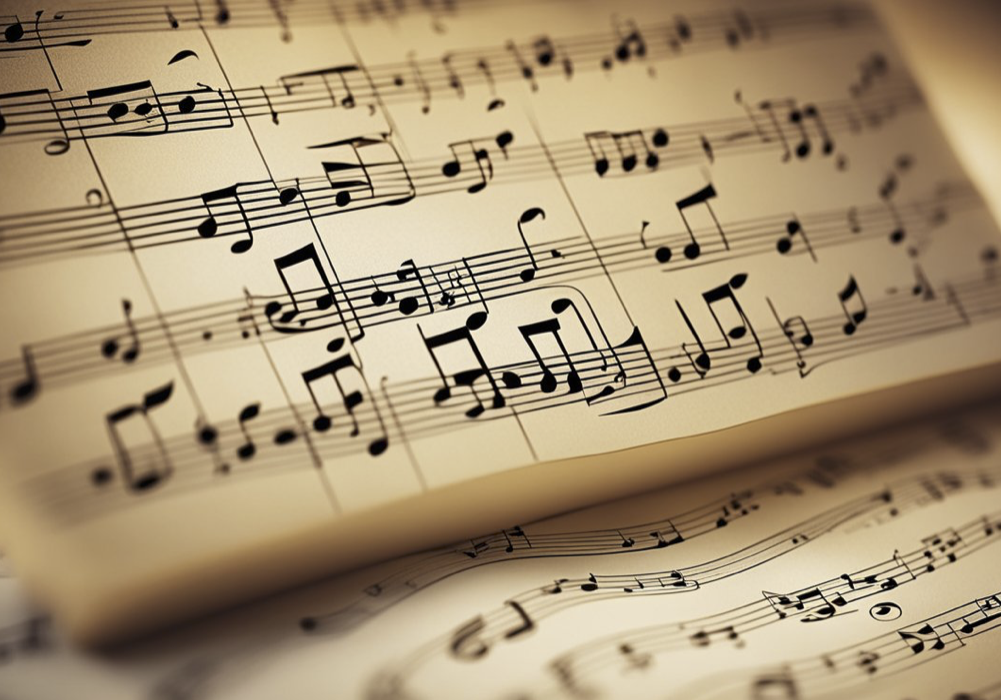It’s a common experience at NES, if you’re sitting in the classrooms of C Block, to hear a faint (or not so faint…) cacophony drifting down from the music classrooms above. Although it’s usually students getting overenthusiastic with the instruments, it can make an otherwise quiet study lesson very entertaining! However, it’s certainly difficult to distinguish what type of music is being racously played above. But, if any of the Print’s readers are ever privy to an actual classical music concert, here is a short history of Western classical music, to not catch you out!
The history of Western Classical Music stretches more than 1000 years into the past. However, most pieces you would ever hear being practiced around school or in a concert aren’t any earlier than the Baroque period. This was a time approximately between 1600 and 1750, where composers like Handel, Bach and Vivaldi created works that are still known to us today! If you’ve ever listened to Vivaldi’s Four Seasons, or the Hallelujah Chorus from Handel’s Messiah, you’ve experienced Baroque music. One key feature of the baroque era was the new ability to play music at many different dynamics, or levels of volume. In the previous Renaissance period, instruments such as the lute and harpsichord were not good at producing a large difference between loud (forte) and quiet (piano) notes. Therefore, when the Baroque rolled around, new instruments like the pianoforte (an older type of piano) added much more dynamic range and made pieces more interesting. Ornamentation was also a key feature of Baroque music, which meant that composers added many musical decorations to simple melodies to create a richer sounding result with much more detail. All of these ideas combined to make bright sounding and interesting pieces filled with regular rhythmic melodies and decorations. In this period, the concept of the orchestra also began to develop, where multiple instruments play together in an ensemble with parts written for specific instruments.
After this period begins the Classical era. This was roughly from the 1750s to 1830s, and famous composers include Haydn, and none other than Mozart himself! If you’ve passed by Secondary String Ensemble’s practices and heard rousing snippets of Haydn’s Surprise Symphony being performed, or the Advanced Strings’s group rendition of Eine Kleine Nachtmusik by Mozart, you’ll have heard Classical music! This period was marked by an interest in balance and clarity, and simplistic forms that contrasted the texture and ornament-filled Baroque times. New inventions included the construction of the piano as we know it today, further developing from the previously mentioned pianoforte and even earlier harpsichord. A piece you may recognise, Für Elise (by Beethoven), came from the tail end of classicism and took advantage of this new piano. The classical period further developed and made orchestras larger, and alongside this development a new separate form of performance called a string quartet began. This quartet (who’s name comes for the word ‘quarto’ meaning fourth) is still a common arrangement in music today of four instruments, and consists of two violins, a viola and cello playing.
Next is the (arguably most famous) Romantic period. Despite it’s name, it has nothing to do with Valentine’s Day – however this era does focus on human emotions and the thoughts of every individual person instead of the collective thoughts of balance like the Classical era. Some famous composers include Tchaikovsky, Mahler, Verdi and Wagner. Here, the form of the orchestra reached it’s peak and had the most musicians playing at once to create large and impressive emotional sounds. This period of music is still very appealing to people today, and modern composers that make music for films, TV or video games are often inspired by themes from the Romantic era. John Williams, a modern composer who has scored films such as Harry Potter, Jurassic Park and Star Wars, has taken inspiration from many older romantic pieces of music. Specifically for Star Wars Williams was inspired by Gustav Holst’s “The Planets” Suite.
In fact, all the eras of classical music are still around us to this day. Rossini’s Overture from William Tell is commonly used in media for comedic chase scenes, the Nokia ringtone is actually indirectly inspired by Chopin’s Grande Valse, and music such as Canon in D is still used in wedding celebrations. If you listen carefully, you’ll find that a basic music education will benefit you not only in C Block but throughout all your daily life.
Music Glossary
Vivaldi’s Spring –
Sarah Chang: Spring Violin Concerto (Antonio Vivaldi)
Pachabel’s Canon In D –
Pachelbel Canon in D Major – the original and best version.
Haydn’s Surprise Symphony Movt. 2 – Haydn, Symphony No. 94 in G Major (Surprise) Second Movement: Andante
Mozart’s Eine Kleine Nachtmusik – Mozart: Eine Kleine Nachtmusik, I. Allegro | New Century Chamber Orchestra
Beethoven’s Für Elise –
“Für Elise” Performed by Lang Lang
Beethoven’s Pastorale Symphony (As seen in the Simpsons!) –
The Simpsons – Pastoral Symphony
William Tell (The well known part starts at approximately 8.30 minutes) –
William Tell Overture – Rossini
Rachmaninoff’s Piano Concerto 2, 3rd movement in C minor –
Yuja Wang: Rachmaninov Piano Concerto No. 2 in C minor Op. 18 [HD]


